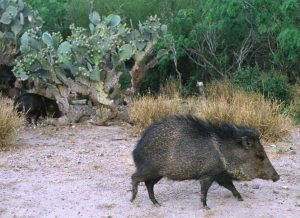Tyler State Park–Wild Food Hike
Wednesday, March 10th, 2010This is Passport to Texas
Before we had grocery stores, we had nature.
Whenever the edible wild plants were domesticated, tamed and cultivated, that’s when human culture could grow.
Human culture evolved, says Joe Roach, because people no longer spent their days searching for food in the wild. Roach, a park interpreter, occasionally takes visitors on wild food hikes in Tyler State Park.
The program is to have park visitors recognize and gain and appreciation of how edible wild plant support our human culture. We do that by taking a very moderate one half mile hike. We point out the various the various things that the Caddo Indians used [and others] when they were here. And we investigate how the human culture rose on the foundation of edible wild plants.
Roach warns never to eat any wild plant unless you are 100% certain it is safe, as some edible wild plants are similar in appearance to poisonous wild plants. One ubiquitous edible plant is the juniper tree, more commonly referred to as cedar.
You can make a tea out of them, or chew on the leaves. Some people have reported that it helps control various gum diseases. In survival training some people say you can chew on the juniper to freshen the breath.
And juniper berries are a classic seasoning for wild game dishes. There’s a Wild Food Hike at Tyler SP March 20; it’s accessible for the mobility impaired. Find details on the Texas Parks and Wildlife website.
That’s our show…For Texas Parks and Wildlife…I’m Cecilia Nasti.
_____________________________________________________
March 20, 2010 — Tyler SP — Wild Food Hike — Explore the edible wildscape during a moderate, half-mile hike. Learn to identify and prepare some of the common edible wild plants and other benefits they have to offer. Accessible for the mobility impaired. 11 a.m.-noon (903) 597-5338.



 Passport to Texas is a
Passport to Texas is a  Passport to Texas is made available by:
Passport to Texas is made available by: